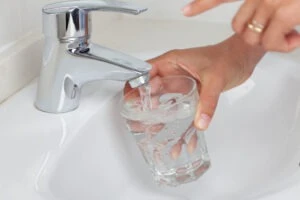
Please note that we are no longer accepting Camp Lejeune cases. We appreciate your interest and understanding. For information on other legal matters, please feel free to contact us.
Many people have suffered harm and died from the contaminated water on the Marine Corps Base Camp Lejeune in North Carolina. And many are asking why it took decades for the military to shut down the dangerous drinking wells. They want to know what the U.S. government knew about the Camp Lejeune water contamination and when they knew it.
Of course, what happens on a military base carries an air of secrecy. So, it is understandable that the public could be skeptical whether the government is revealing everything it knows about the lethal chemicals in the water wells. Thousands of people have filed claims for the harm they suffered, like cancer, from the dangerous chemicals in the drinking water at Camp Lejeune.
What the U.S. Department of Veterans Affairs Knows
The U.S. Department of Veterans Affairs (VA) says that people harmed by the contaminated drinking water might be eligible for disability benefits if they developed certain diseases after exposure.
A person seeking benefits must have lived or served at Camp Lejeune for 30 days or more between August 1953 and December 1987. These dates raise the question of why the dangerous compounds were in the water for over 30 years while the base used the wells to supply their drinking water.
One would think the military tests the base drinking water regularly to ensure it is safe to drink, so how did this situation go on for so long? Perhaps the military did not include testing for these specific chemicals in their routine water assessments.
Diseases Linked to the Contaminated Drinking Water at Camp Lejeune
According to the Public Health information page, “Camp Lejeune: Past Water Contamination,” of the U.S. Department of Veterans Affairs, these are “presumptive conditions” connected to the Camp Lejeune toxic water:
- Parkinson’s disease
- Liver cancer
- Adult leukemia
- Multiple myeloma
- Kidney cancer
- Bladder cancer
- Aplastic anemia and other myelodysplastic syndromes
- Non-Hodgkin’s lymphoma
When a person had the required length of exposure to the contaminants in the drinking water and developed one of those diseases, the military will presume the drinking water caused the disease. The current or former servicemember will not have to prove the water caused their disease.
Chemical Contamination of the Camp Lejeune Water
The Agency for Toxic Substances and Disease Registry (ATSDR) of the Centers for Disease Control and Prevention (CDC) says that the military established the U.S. Marine Corps Base Camp Lejeune, North Carolina, in 1942.
The Marine Corps reports they discovered certain volatile organic compounds (VOCs) in the water in 1982, even though they now state the water supply was contaminated as far back as August 1, 1953.
The base had eight water treatment plants in 1982, and the Marine Corps found the VOCs in two of the eight drinking water treatment plants.
Chemicals in the Base Drinking Water
Although the military discovered toxic chemicals in the drinking water at Camp Lejeune in 1982, it did not shut down the two contaminated wells until 1985. People serving, living, or working on the base continued drinking this lethal water long after the dangers were discovered. One can presume they were unaware of the lethal chemicals they were consuming.
VA says that the two on-base wells contained:
- Trichloroethylene
- Benzene
- Perchloroethylene
- Vinyl chloride
- Additional dangerous chemicals
These chemicals are toxic to the human body and linked to multiple forms of cancer and other severe diseases.
We Will Be
There To Help
You All The Way
Benefits Extended to Families of Servicemembers
Originally, only veterans could get benefits for the harm they suffered from the toxic water at Camp Lejeune. Now, thanks to the Janey Ensminger Act of 2012 and the Janey Ensminger Act of 2019, veterans and their families are eligible for benefits for diseases linked to the contaminated water.
Master Sergeant Jerry Ensminger’s nine-year-old daughter, Janey, died from leukemia in 1985. Janey was born at Camp Lejeune, where she lived with her family. She received her cancer diagnosis in 1983. Eventually, the federal government reported the toxic chemicals in the water are associated with the development of various types of cancers in children and adults, including leukemia.
Affected families meeting the length of exposure requirements to the on-base drinking water could receive benefits if they developed any of these diseases after consuming the water:
- Breast cancer
- Bladder cancer
- Female infertility
- Esophageal cancer
- Kidney cancer
- Hepatic steatosis
- Lung cancer
- Leukemia
- Miscarriage
- Myelodysplastic syndromes
- Multiple myeloma
- Neurobehavioral effects
- Scleroderma
- Renal toxicity
- Non-Hodgkin’s lymphoma
With more research, there could be additional medical conditions eligible for benefits. Even if your claim was denied in the past, you might now be eligible for benefits.
Call Now for a Free Case Consultation
The Fitch Law Firm LLC offers a free initial consultation to discuss your case and learn your options. Call our team now to get started. There is no obligation.
